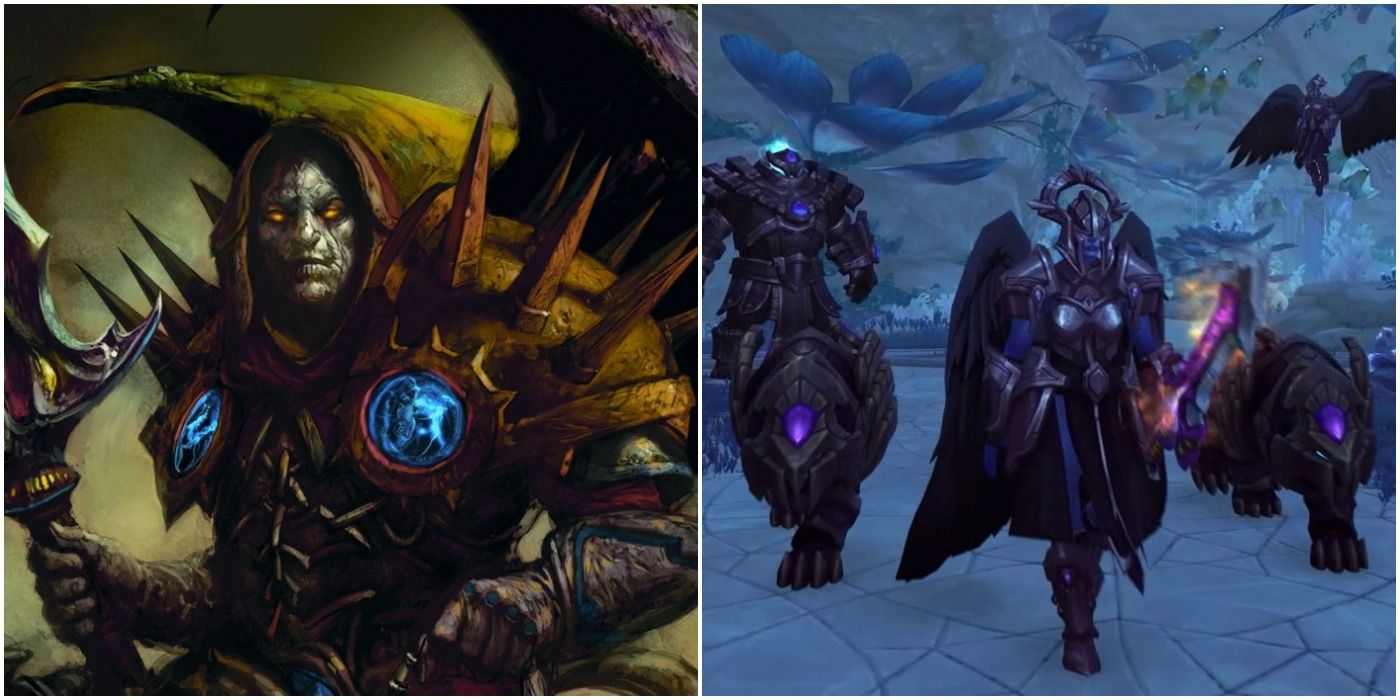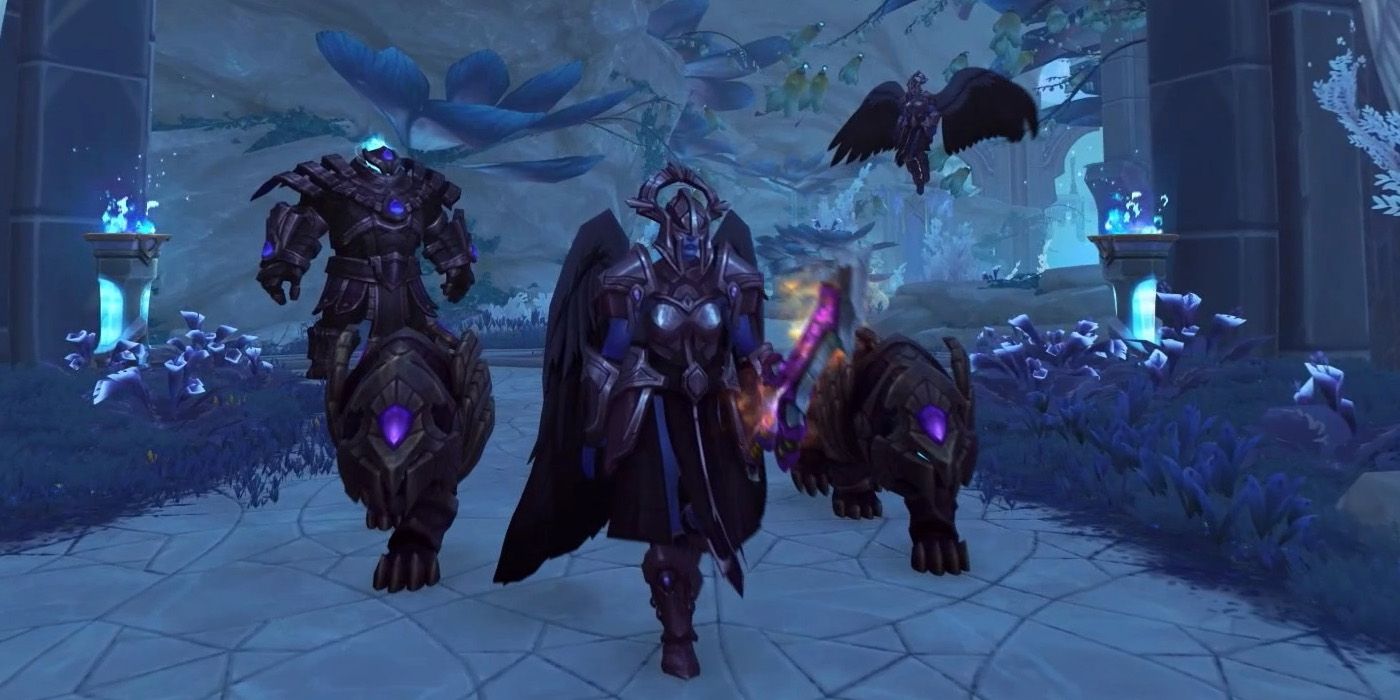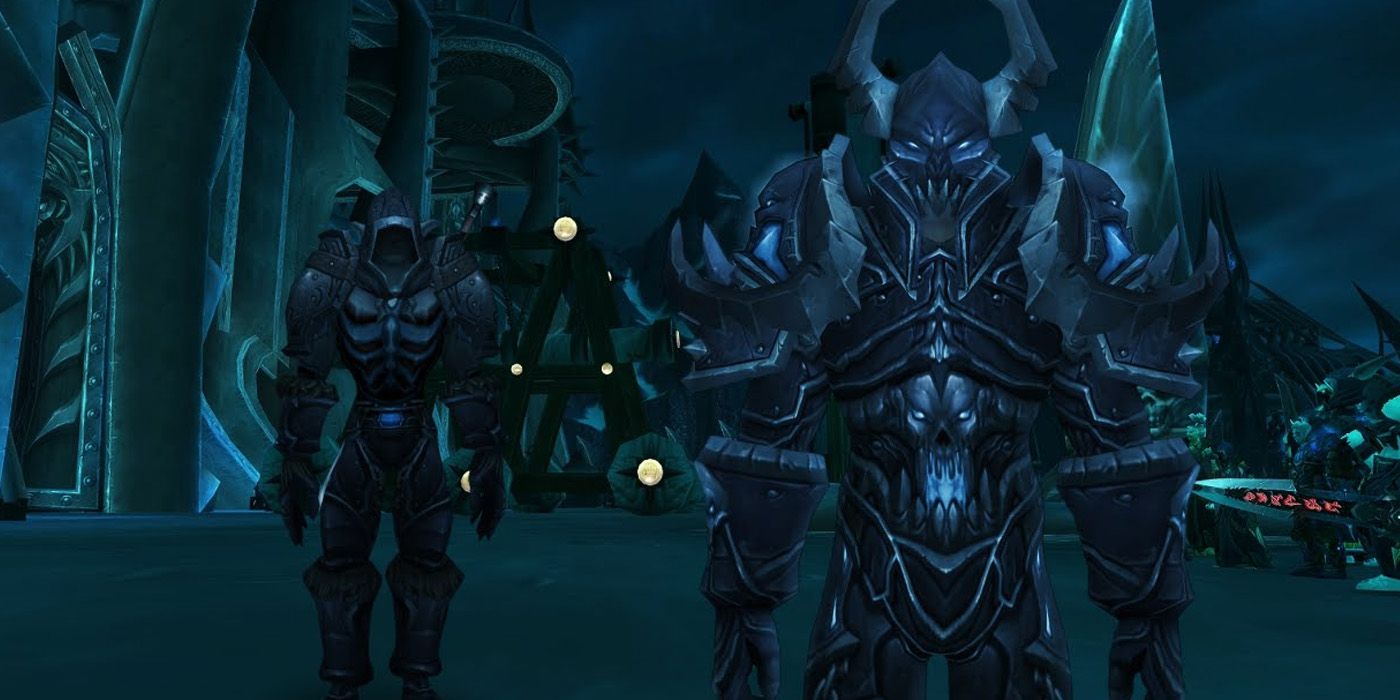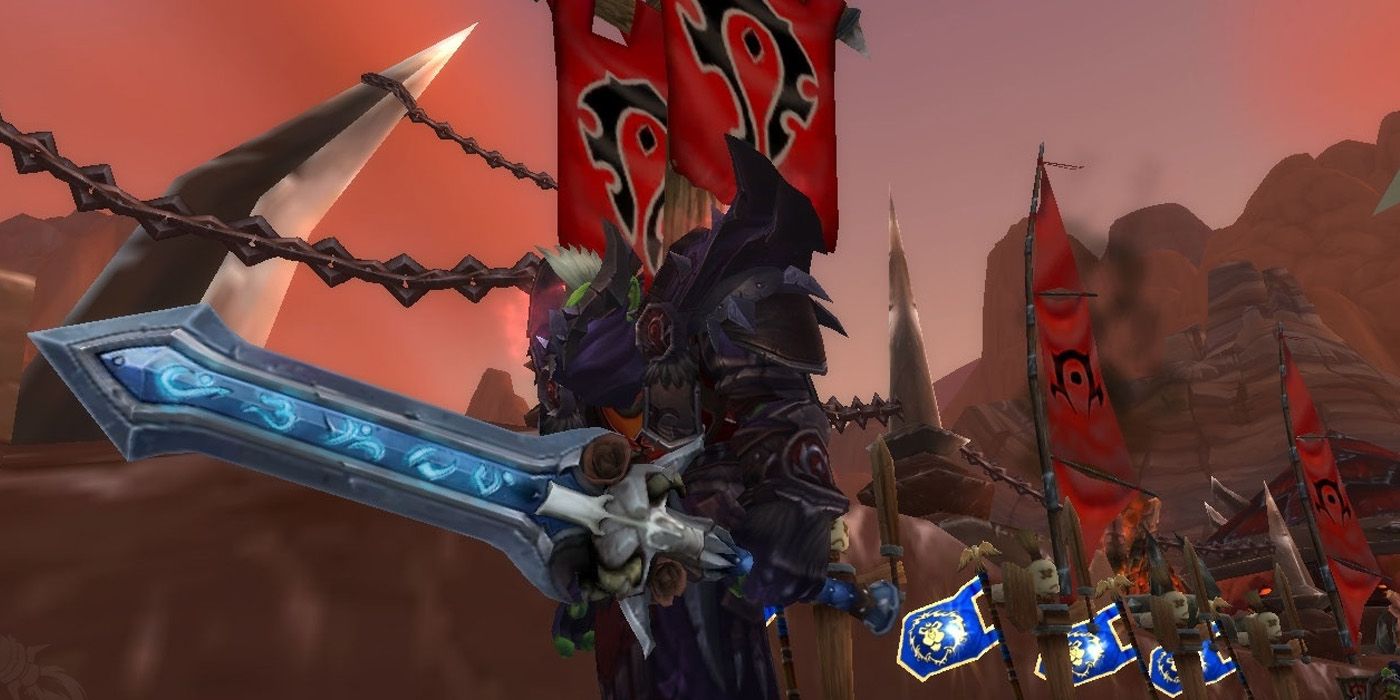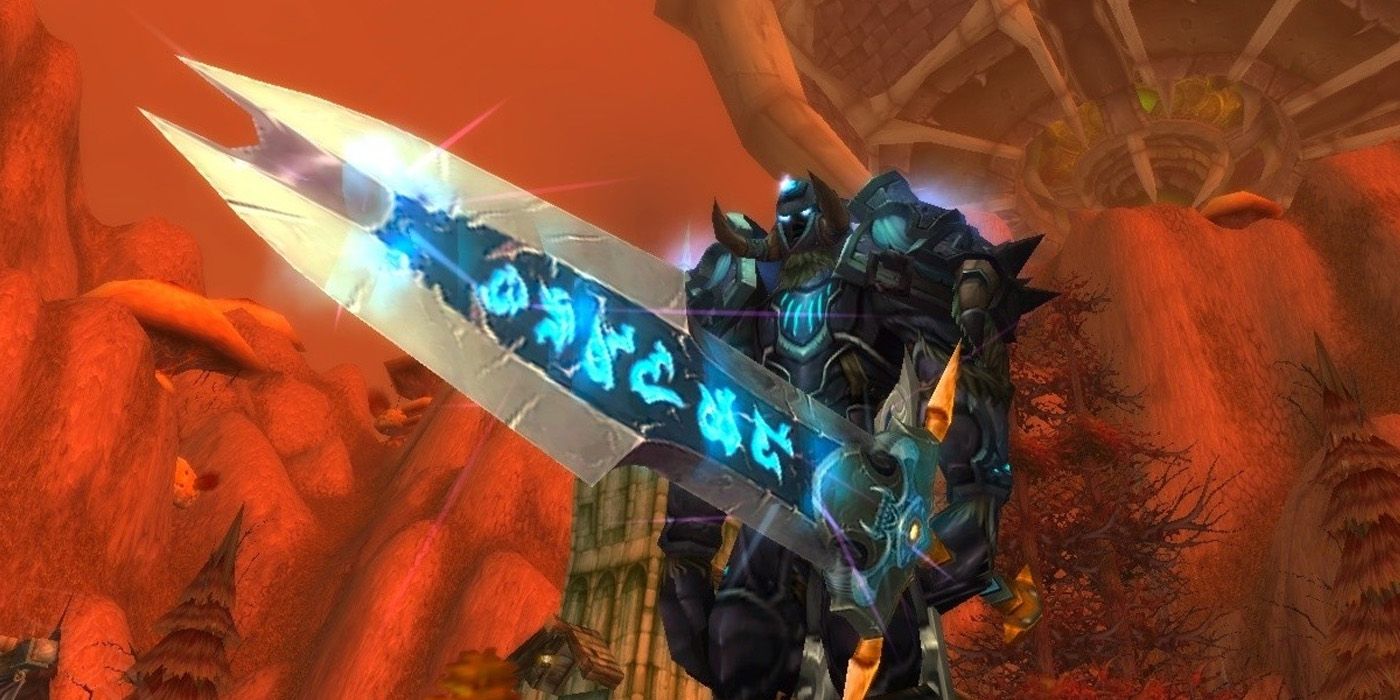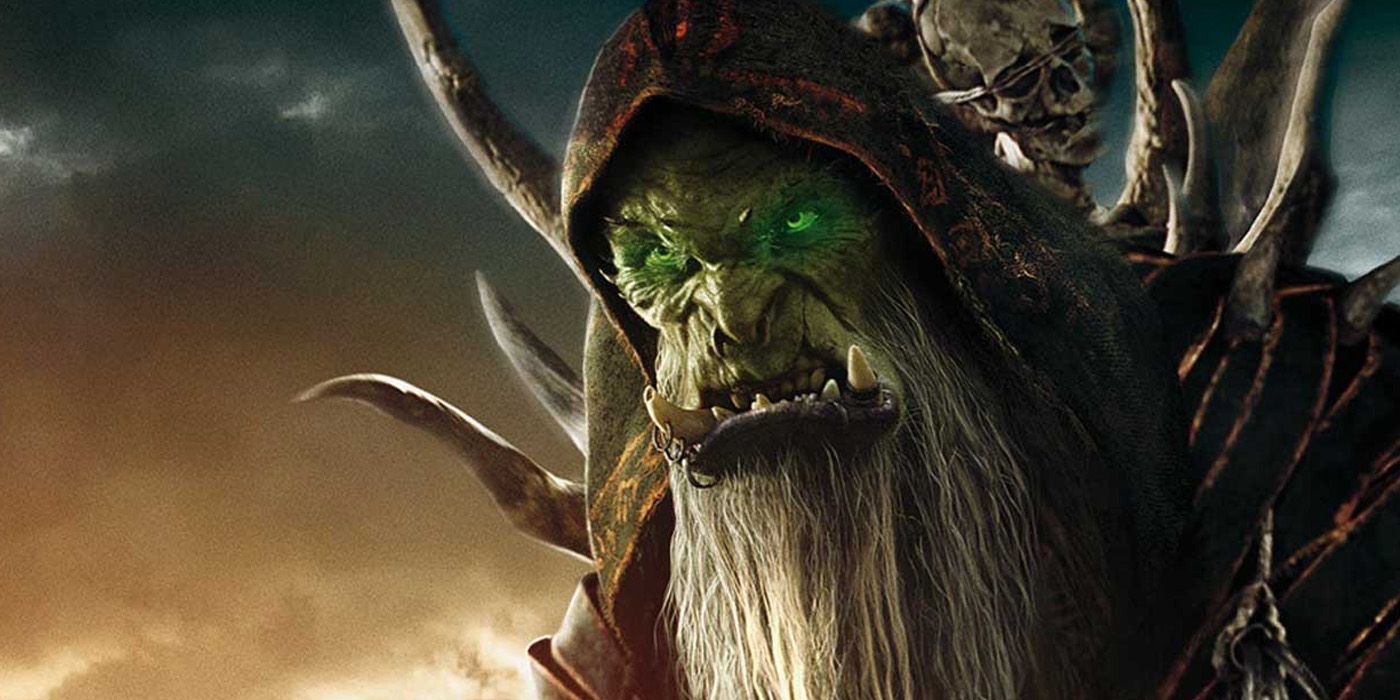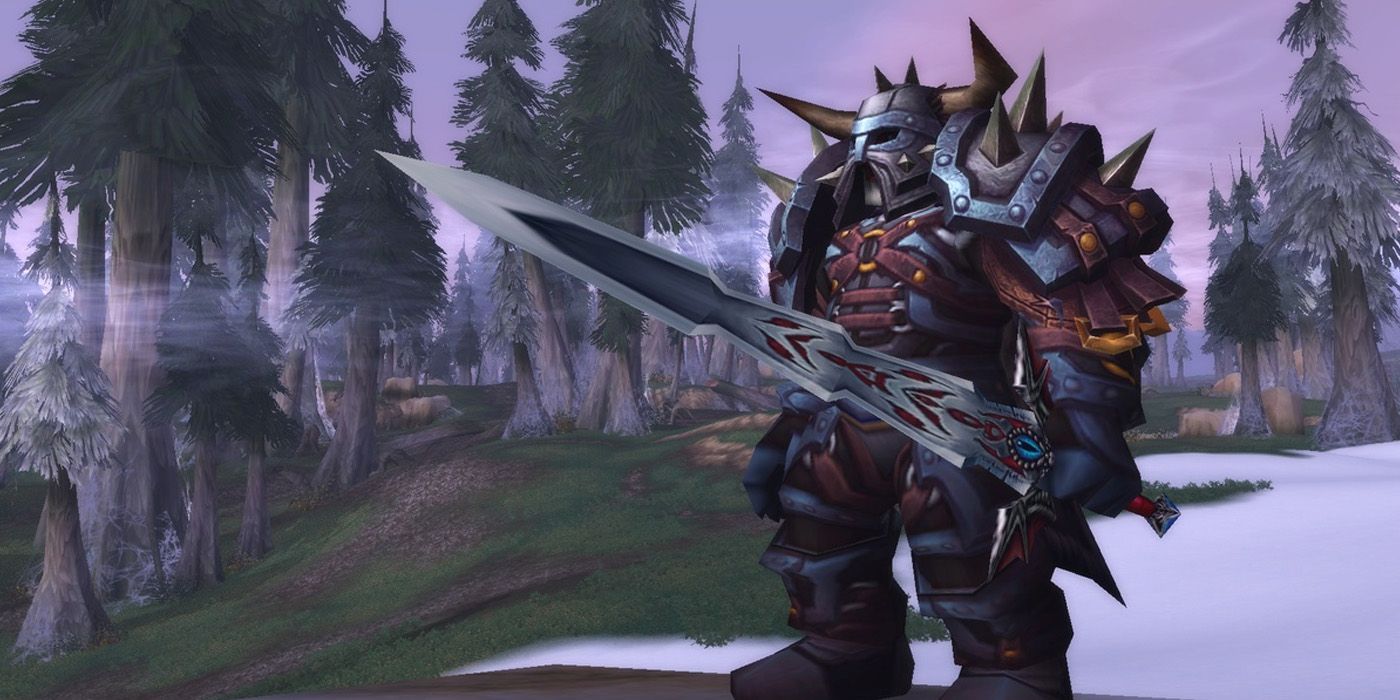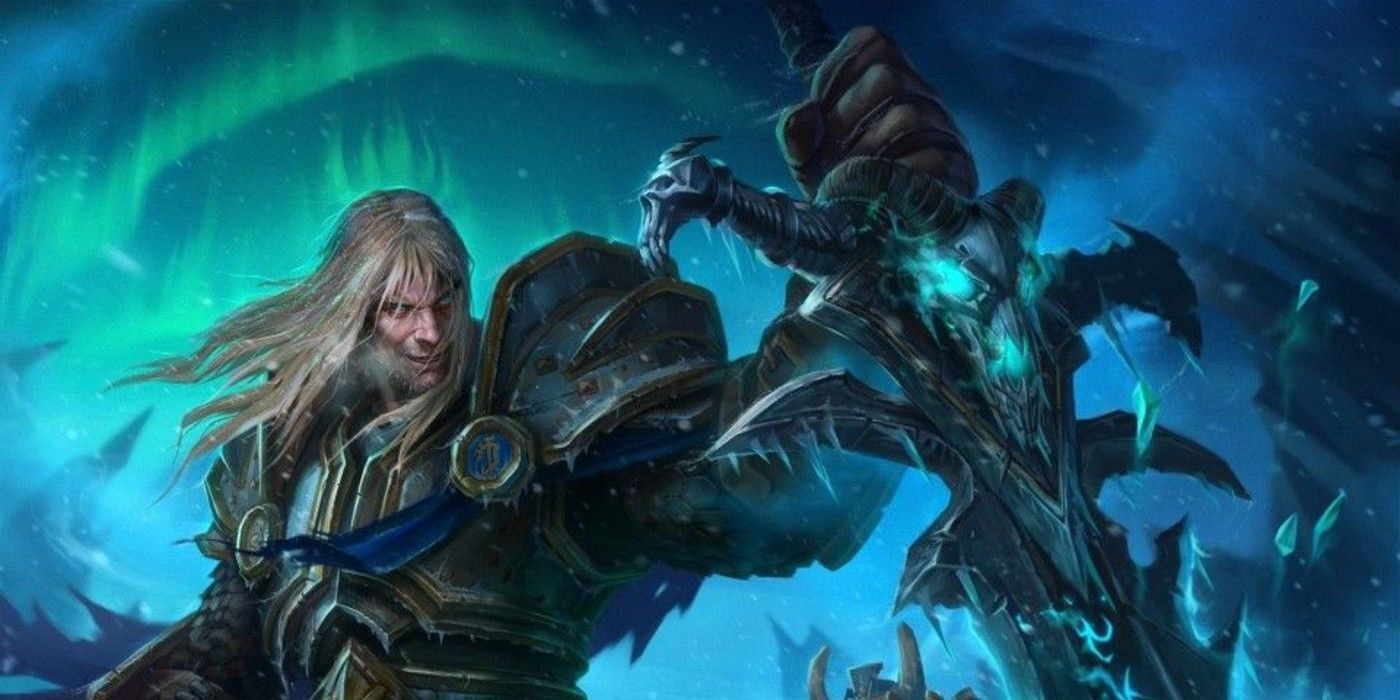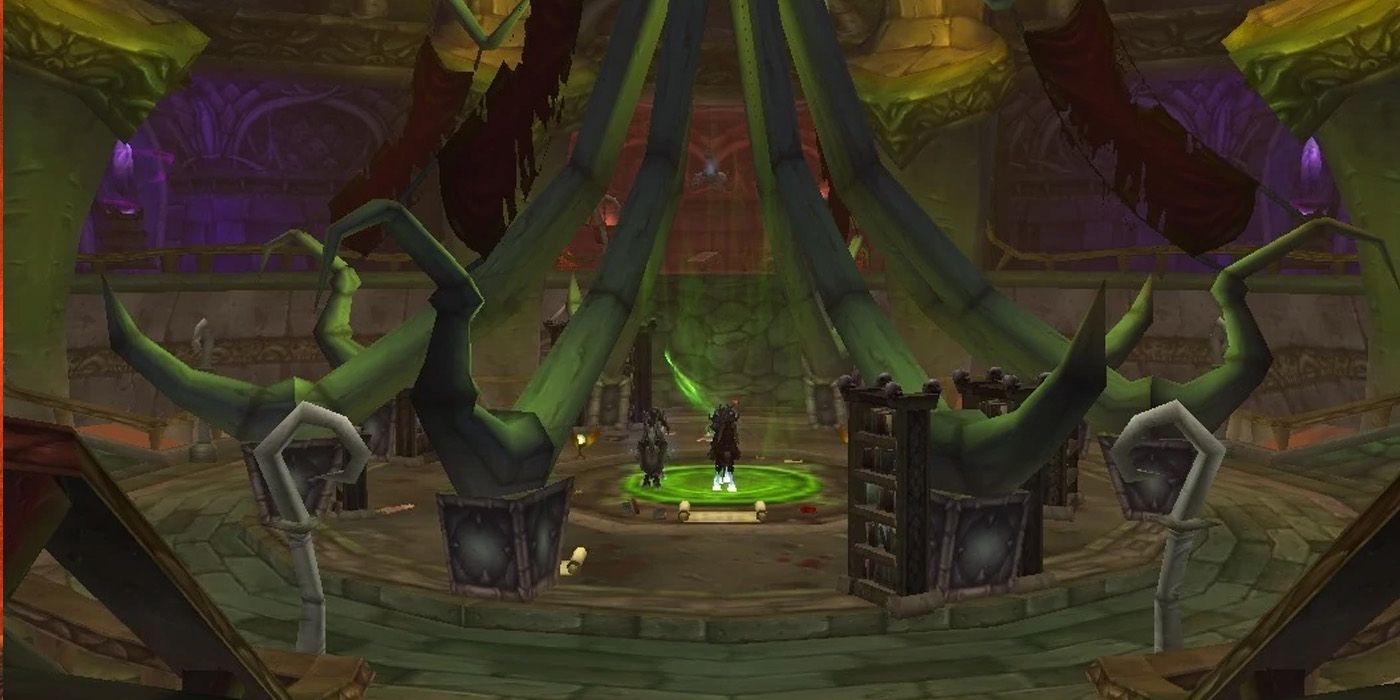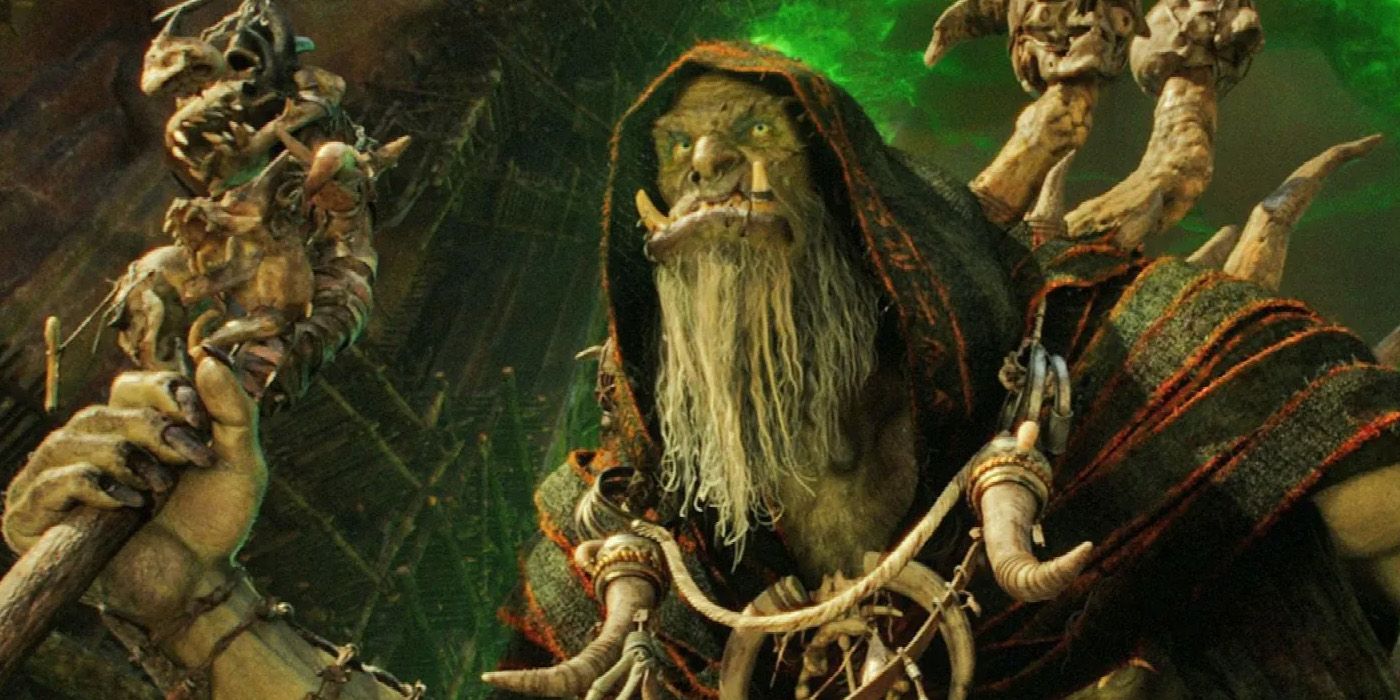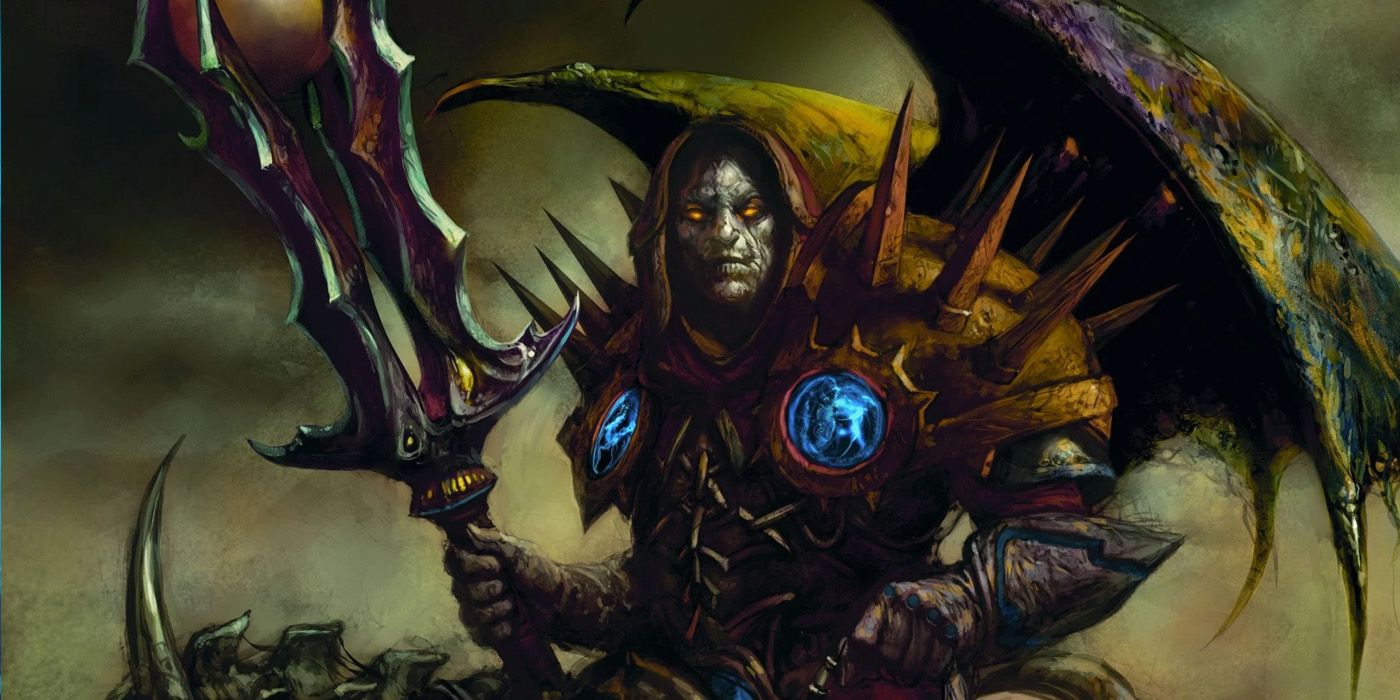Fans of Blizzard's World of Warcraft will fondly remember the Death Knight, the hit MMO's first "Hero Class." Death Knights take after Arthas Menethil, the Lich King. They essentially wield the power of blood, death, and ice to lead the charge amongst the Lich King's forces. However, as adventurers, they wield their might as powerful tanks and damage dealers.
Death Knights in World of Warcraft seem to have more secrets to hide than they let on. Inside their skeletal armors remain mysterious traditions and lore that set the Death Knights apart from other Classes. However, just what sets Death Knights apart from other tanks and their other companions?
10 Attachment To Blood, Frost, Unholy
As with most Classes, Death Knights utilize three kinds of Specializations depending on their player's build of choice. Essentially, these Specializations reflect the Death Knight's reliance on the cold, pain, and unholy magic to fuel their magical powers and force enemies to submit. Their Blood Specialization allows them to tank and take damage. Meanwhile, their Frost and Unholy Specializations enable them to deal damage in numerous ways.
The Blood Specialization enhances the Death Knight's proficiency in self-healing and damage output. Instead of casting damaging spells, the Blood Spec gives Death Knights buffs and debuffs they can use. Meanwhile, the Frost Spec can enhance melee damage output to include stronger single-damage and AOE options as well as damage over time. Meanwhile, the Unholy Spec gives summoning options, as well as additional debuffs.
9 Protect Or Decimate
Due to their stature and status as knights of unholy power, it makes sense for Death Knights to take to the front lines in battle. Essentially, Death Knights are a hybrid melee class similar to Warriors, albeit with various magical effects courtesy of their Runes.
In PVP, Death Knights rely on the crowd control potential of Frost to stop their foes in their tracks. Likewise, they can channel debuffs via Unholy to slowly deal damage over time. Frost Death Knights can disrupt movement with efficient crowd control while dealing strong burst damage. Meanwhile, Unholy Death Knights pressure opponents through their summoned pets, a permanent ghoul, and various damaging effects.
8 A Rune For Every Situation
Whereas other Classes have certain resources to use when casting spells, Death Knights empower themselves by generating different runes. They consume these runes when casting abilities, earning them runic power in the process. In the lore, this reflects the Death Knight's reliance on various runes to cast their spells.
Technically, the Rune System gives Death Knights a more complicated resource component that forces players to better optimize their abilities. Death Knights slowly regenerate a set of six runes, all of which they can spend on different spells to generate runic power. Likewise, they can consume runic power to cast powerful spells or regenerate runes. It's in this interplay of resources that make Death Knights quite complex to play but terrifying to face.
7 Enter The Runeblade
Signature to the Death Knight would be the presence of Runeblades, powerful and vampiric weapons that feed on life force to activate their magical powers. Arthas Menethil's Frostmourne is the most famous of these Runeblades. However, all Death Knights commonly have a Runeblade to call their own, often to help them exact suffering onto others.
In the Warcraft RPG, Runeblades slowly corrupt knights into becoming Death Knights before becoming their personal weapons. Like Frostmourne, these Runeblades grow in power with the souls of the things they kill. If its wielder dies, the Runeblade reverts back into the appearance of a normal weapon, waiting to corrupt another Death Knight.
6 Horrific Beginnings
Interestingly, the first Death Knights weren't the same as Azeroth's modern Death Knights of the Ebon Blade. Rather, the first Death Knights appeared back in the Second War, courtesy of Gul'dan. Instead of training new Orc Warlocks, Gul'dan opted to place their souls in the bodies of dead knights.
Moreover, the Warcraft RPG adds that Death Knights suffer what is known as "Alabaster Skin." Essentially, a Death Knight's progress in power shows in their skin. The more powerful a Death Knight, the paler and harder their skins get, akin to alabaster or marble. Moreover, their hair will gradually turn white the more powerful they get, transforming into total white by the time they attain their prime.
5 Psychological, Biological Changes
Unlike other Classes, Death Knights have noticeable changes in appearances. For instance, unlike their other racial counterparts, most Death Knights appear like a paler version of their living selves. Their eyes now have an unholy light or even tattoos that cover their faces. Nowadays, as undead, modern Death Knights don't need to eat or sleep. Psychologically, the Lich King's Death Knights have no memory of their former lives. Moreover, they slowly gain an "eternal hunger" that forces them to inflict suffering on others.
Interestingly, these changes fall short of extreme physical changes as experienced by the Demon Hunters. However, these "radical changes" seem to be a common trait among Hero Classes, and might be something to expect in the future.
4 The Chilling Control Of The Lich King
By the time of Draenor's destruction, the Lich King created his own version of Death Knights. Unlike Gul'dan's resurrected Warlocks, the Lich King's Death Knights wielded the powers of the Scourge. This iteration started with Prince Arthas Menethil, once a Paladin of the Silver Hand. When other Paladins and warriors tried to stop the Scourge in Lordaeron, the Lich King also converted their dead bodies into these dark champions. Unlike the first Death Knights that had their souls intact, these ones were under the complete control of the Lich King.
Arthas continued this tradition even after assuming control of the Lich King within him. However, he only used his newfound powers to grow his undead army even more.
3 The Death Knights Of The Ebon Blade
The Lich King's control of the Death Knights did not last. During the Battle for Light's Hope Citadel, the Death Knights were freed from the Lich King's control. These freed Death Knights formed the Knights of the Ebon Blade, which then sent its members in the service of their respective factions.
It's among the Death Knights of the Ebon Blade where the players will create their character. Essentially, players have to play through the starting area as Death Knights who initially served Arthas until they were freed from his control, and then they join the neutral faction before being freed to their respective Horde and Alliance homes.
2 Multiple Design Revisions
As with other "new" Class archetypes at the time, the Death Knight received extensive revisions prior to its formal introduction in Wrath. For instance, Blizzard's original iteration of the Death Knight described it more as a lich on a warhorse. Meanwhile, Warcraft 3's Death Knight (Arthas) reflected more of the modern iteration today. In the Warcraft RPG, Death Knights served as a Prestige Class or a specialized class. In this iteration, Death Knights were former paladins that fell into darkness.
Of course, as players would see, it's the Warcraft 3 version of the Death Knight that would make its way to the Wrath expansion. Blizzard made no changes to the initial appearance of the Death Knight during the Second War.
1 Warcraft 3 Alpha Had An Interesting Take
Of all Death Knight iterations, it's perhaps worthwhile to take a look at the concept that got into Wrath. Arthas' Death Knight concept in Warcraft 3 hasn't been the "final" version outright. Apparently, in the alpha build, Death Knights of Warcraft 3's Third War have the same origins as the Second War's iteration. This means the alpha build of Death Knights were meant to be undead Human Knights possessed by the souls of fallen Orc Warlocks. If this were to be followed, Death Knights would've been the Old Horde's main spellcasting regiment.
When this was revised, the newer iterations were initially called "Anti-Paladins." Furthermore, these Death Knights didn't have skeletal mounts but mist-like creatures called Nightmares.

